
Fire in the Valley: The Birth and Death of the Personal Computer
by
Michael Swaine
and
Paul Freiberger
Published 19 Oct 2014
Like most of the early significant programs, it originated out of one person’s initiative. Gary Kildall In mid-1972, Gary Kildall came across an advertisement on a bulletin board that said “MICROCOMPUTER $25.” The item advertised, the Intel 4004, was actually a microprocessor, arguably the first in the world, but it still sounded like a real bargain to Kildall. He decided to buy one. Although many of the microcomputer companies’ founders didn’t fit the typical image of an industry leader, Gary Kildall didn’t even act as if he wanted to be in the game. While wrapping up his PhD at the University of Washington, Kildall had moved to Pacific Grove, California.
…
They were also, although no one used this term at the time, microcomputers. One of the first people to begin developing these programs was a professor at the Naval Postgraduate School located down the coast from Silicon Valley, in Pacific Grove, California. Like Osborne, Gary Kildall would be an important figure in the development of the personal computer. * * * Figure 13. Gary Kildall Kildall wrote the first programming language for Intel’s 4004 microprocessor, as well as a control program that he would later turn into the personal-computer industry’s most popular operating system. (Courtesy of Tom G. O’Neal) In late 1972, Kildall already had written a simple language for the 4004—a program that translated cryptic commands into the more cryptic ones and zeroes that formed the internal instruction set of the microprocessor.
…
Eubanks thoroughly enjoyed his work on a nuclear-powered, fast-attack Navy submarine. His friend, software designer Alan Cooper, summed it up: “Gordon thrives on tension.” * * * Figure 40. Gordon Eubanks Eubanks’s master’s thesis under Gary Kildall became one of the early industry’s standard programming languages. (Courtesy of Digital Research) Gordon also liked to work hard. When he arrived at the Naval Postgraduate School, he soon heard about a professor named Gary Kildall who was teaching compiler theory. Everybody said Kildall was the toughest instructor, so maybe he’d learn something, Eubanks thought. For Eubanks, the hard work in Kildall’s class paid off.

From Airline Reservations to Sonic the Hedgehog: A History of the Software Industry
by
Martin Campbell-Kelly
Published 15 Jan 2003
The market for kit computers for hobbyists was very limited. With many competitors entering the field, MITS and IMS soon began to lose market share and eventually went out of business. However, a number of individuals who developed software for these machines—including Bill Gates, Paul Allen, and Gary Kildall—were to get a first-mover advantage that would give them early dominance of the personal computer software industry. The transforming event for the personal computer was the launch of the Apple II in April 1977. The tiny firm of Apple Computer had been formed by the computer hobbyists Steve Jobs and Steve Wozniak in 1976.
…
At this time Microsoft was almost exclusively a supplier of programming languages to the microcomputer industry through OEM channels.7 Although it had competitors, all of them tiny startups, none was nearly as successful in this niche. But Microsoft was little known outside the industry, and it would be several years before the firm was perceived as a maker of consumer software. 206 Chapter 7 Operating Systems The first vendor of microcomputer operating systems was Digital Research, founded in 1976 by Gary Kildall (1942–1994).8 In 1972, when the Intel microprocessor first came to his attention, Kildall was a computer science instructor at the Naval Postgraduate School in Monterey, California. Kildall, with a PhD in computer science, got interested in the challenge of programming the new devices and became a consultant to Intel, producing PL/M, a well-regarded programming language for the Intel 8008 microprocessor.
…
Rubenstein had briefly been marketing director of IMS, manufacturer of the IMSAI 8080 microcomputer, and from that vantage point he had observed the growing personal computer software industry and the emergence of retail computer stores as a distribution channel. Having negotiated a CP/M license with Gary Kildall’s Digital Research while with IMS, he saw the significance of using the CP/M platform to broaden the potential customer base of a software product. MicroPro began as a two-person operation, consisting of Rubenstein and a former IMS programmer, Rob Barnaby. Its first product was a rudimentary text processing system called WordMaster.

The Trouble With Billionaires
by
Linda McQuaig
Published 1 May 2013
For the first few years, Microsoft was a relatively small, aggressive technology company with several dozen employees – one of a number of such companies working in the emerging field of desktop computers. At this point, these were fairly primitive machines and hard to operate, and the market for them, while growing, was still limited. Gates was successful in the field, but not a leading figure. He was certainly far behind Gary Kildall, a brilliant computer innovator thirteen years his senior who had already developed an operating system, known as Control Program for Microcomputers or CP/M, which was the most widely used operating system for desktops at the time. Kildall’s company, Digital Research, had sold hundreds of thousands of copies of CP/M, and was pulling in revenue of more than $100,000 a month.
…
Project leader Don Estridge told Gates that the new IBM chief executive, John Opel, was delighted to hear that the company might be doing a deal with Gates, whose mother he knew personally. (Opel sat on the board of the United Way NGO with Mary Gates.) Bill and his mother certainly fitted much more comfortably into the upscale corporate culture of IBM than the hippie-like and free-spirited Gary Kildall. In the end, IBM did a deal with Gates – even though Kildall’s system was clearly superior. Indeed, Kildall, who was years ahead of everyone else in the field, had already developed the capacity for multitasking – a function that it would take another decade for IBM and Microsoft to come out with.
…
According to Evans, Kildall was ‘the true founder of the personal computer revolution and the father of PC software’.2 But, of course, it was Gates who was to get the credit, and in the process become one of the world’s most famous and celebrated men – and the richest person on the planet. • • • But does he deserve that fortune? Although Gates was a go-getter who maximized every opportunity that came his way, he wasn’t the actual inventor of the operating system of the personal computer, as he’s often celebrated for being. If anyone deserves that title, it’s Gary Kildall. Of course, this is by no means the first time an actual inventor has been nudged aside by a rival who was simply more adept at manoeuvring himself to the front of the line. The history of inventions is full of such stories. But the point isn’t that Kildall should have ended up with $50 billion (in fact, Kildall, although not in the same league as Gates, did do very well financially).

The Success Equation: Untangling Skill and Luck in Business, Sports, and Investing
by
Michael J. Mauboussin
Published 14 Jul 2012
He left under his own power but died three days later from the injury, complicated by his chronic alcoholism. He was fifty-two years old. He is buried in Seattle and has an etching of a floppy disk on his tombstone. His name is Gary Kildall.3 You'd be excused for thinking that the first part of the story is about Bill Gates, the multibillionaire founder of Microsoft. And it is certainly tantalizing to ask whether Gary Kildall could have been Bill Gates, who at one point was the world's richest man. But the fact is that Bill Gates made astute decisions that positioned Microsoft to prevail over Kildall's company, Digital Research, at crucial moments in the development of the PC industry.
…
The term comes from the acronym “SABR,” which stands for the Society for American Baseball Research. I use the term more generally to reflect the study of all sports through statistics. 8. Richard A. Epstein, The Theory of Gambling and Statistical Logic, rev. ed. (San Diego, CA: Academic Press, 1977), xv. Chapter 1—Skill, Luck, and Three Easy Lessons 1. Jeffrey Young, “Gary Kildall: The DOS That Wasn't,” Forbes, July 7, 1997. 2. Harold Evans, They Made America: From the Steam Engine to the Search Engine: Two Centuries of Innovators (New York: Little, Brown and Company, 2004), 402–417. 3. Peyton Whitely, “Computer Pioneer's Death Probed—Kildall Called Possible Victim of Homicide,” Seattle Times, July 16, 1994. 4.
…
Six Impossible Things Before Breakfast: The Evolutionary Origins of Belief. London: Faber and Faber, 2006. Yarrow, Kielan, Peter Brown, and John W. Krakauer. “Inside the Brain of an Elite Athlete: The Neural Processes that Support High Achievement in Sports.” Nature Reviews Neuroscience 10 (August 2009): 585–596. Young, Jeffrey, “Gary Kildall: The DOS That Wasn't.” Forbes, July 7, 1997. Young, S. Stanley, Heejung Bang, and Kutluk Oktay. “Cereal-Induced Gender Selection? Most Likely Multiple Testing False Positive.” Proceedings of the Royal Society B 276, no. 1660 (April 7, 2009): 1211–1212. Ziliak, Stephen T., and Deirdre N. McCloskey.
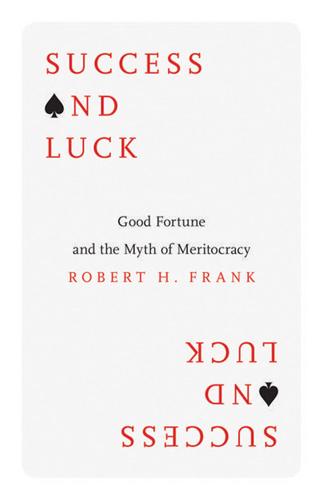
Success and Luck: Good Fortune and the Myth of Meritocracy
by
Robert H. Frank
Published 31 Mar 2016
A key step in its transition from a small tech start-up was when IBM approached Gates in 1980 to ask whether Microsoft could help create an operating system for the new personal computer it was developing. Gates was originally reluctant to take on the project and suggested that IBM contact Digital Research, another small Seattle software firm that had already developed a personal computer operating system called CP/M. IBM spoke with Digital Research’s founder, Gary Kildall, who expressed interest. Accounts differ as to how events unfolded after that meeting, but what’s clear is that IBM and DR failed to reach an agreement on the sale of CP/M.13 Jack Sams, the IBM negotiator in charge of procuring an operating system, later mentioned to Bill Gates that IBM was considering the possibility of acquiring QDOS, the so-called “quick and dirty operating system” written by Tim Patterson of Seattle Computer Products.
…
In short, most of us would never have heard of Microsoft if any one of a long sequence of improbable events had not occurred. If Bill Gates had been born in 1945 rather than 1955, if his high school had not had a computer club with one of the first terminals that could offer instant feedback, if IBM had reached an agreement with Gary Kildall’s Digital Research, or if Tim Paterson had been a more experienced negotiator, Gates almost certainly never would have succeeded on such a grand scale. Sometimes, even seemingly unlucky starts turn out to make long-run success more likely. Gladwell cites the experience of Jews who immigrated to New York in the early twentieth century and went on to prosper in the garment industry.

Computer: A History of the Information Machine
by
Martin Campbell-Kelly
and
Nathan Ensmenger
Published 29 Jul 2013
Although IBM was the world’s largest software developer, paradoxically it did not have the skills to develop software for personal computers. Its bureaucratic software-development procedures were slow and methodical, and geared toward large software artifacts; the company lacked the critical skills needed to develop the “quick-and-dirty” software needed for personal computers. IBM initially approached Gary Kildall of Digital Research—the developer of the CP/M operating system—for operating software for the new computer, and herein lies one of the more poignant stories in the history of the personal computer. For reasons now muddied, Kildall blew the opportunity. One version of the story has it that he refused to sign IBM’s nondisclosure agreement, while another version has him doing some recreational flying while the dark-suited IBMers cooled their heels below.
…
Second, there was a strategic problem in working around the existing MS-DOS operating system; one had to either replace MS-DOS entirely with a new operating system or else place the new operating system on top of the old, providing a second layer of software between the user’s applications and the hardware. In the first case, one would no longer be able to use the thousands of existing software applications; but in the second case, one would have an inherent inefficiency. Perhaps the company with the strongest motive for developing a GUI-based operating system was Gary Kildall’s Digital Research, the original developer of CP/M, the operating system used on 8-bit microcomputers. It was estimated that 200 million copies of CP/M were eventually sold. As noted in the previous chapter, Kildall’s Digital Research failed to obtain the contract to develop the IBM PC operating system, in favor of Gates’s Microsoft.
…
Although CD-ROM drives were expensive upon their introduction, costing $1,000 or more for several years, their huge capacity gave them the potential to create an entirely new market for computer-enabled content that the embryonic computer networks would not be able to satisfy for another fifteen years. As long as the price of a CD-ROM drive remained around $1,000, its use was limited to corporations and libraries, mainly for business information and high-value publications. In the consumer arena, two of the industry leaders in personal-computer software, Gary Kildall and Bill Gates, played critical roles in establishing a market for CD-ROM media. Both Kildall and Gates hit on the idea of the CD-ROM encyclopedia as the means to establish the home market for CD-ROMs. Kildall explained: “Everyone knows encyclopedias usually cost about $1,000. Someone can rationalize buying a computer that has the encyclopedia, if it’s in the same price range as the printed encyclopedia.”

The Code: Silicon Valley and the Remaking of America
by
Margaret O'Mara
Published 8 Jul 2019
While never achieving the fame of Bill Gates, he continued to make and market CP/M, and became a familiar face on public television as the host of The Computer Chronicles before his untimely death at age 52, in 1994. Gary Kildall, Computer Connections: People, Places, and Events in the History of the Personal Computer Industry, unpublished manuscript in the possession of Scott and Kristen Kildall, reproduced online with permission by the Computer History Museum at http://www.computerhistory.org/atchm/in-his-own-words-gary-kildall/, archived at https://perma.cc/NU3B-M47B. 6. Rinearson, “Young Students.” 7. Burt McMurtry, interview with the author, January 15, 2015; Leena Rao, “Sand Hill Road’s Consiglieres: August Capital,” TechCrunch, June 14, 2014, https://techcrunch.com/2014/06/14/sand-hill-roads-consiglieres-august-capital/, archived at https://perma.cc/6DN4-DERQ. 8.
…
Big Blue was interested in Microsoft’s whole line of computer languages, and it also wanted Gates’s help in finding the right operating system for it. In a chain of events that ultimately became legendary in computer circles (and whose disputed details became another proof point for Silicon Valley’s later dislike of all things Microsoft), the IBM team tried and failed to make a deal with California-based developer Gary Kildall, designer of the operating system, CP/M, that seemed poised to become the market standard. As the whole plan teetered, Gates swooped in, adapting an OS from another Seattle-based company into something he called MS-DOS. Kildall called it a clone of CP/M. Many years and lawsuits later, Kildall struck his own deal with IBM for his operating system, but by that time Microsoft had cemented its lock on the IBM personal-computer universe.
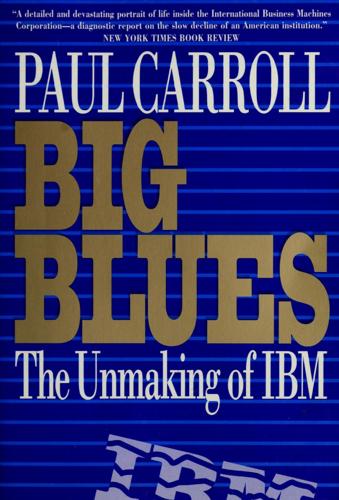
Big Blues: The Unmaking of IBM
by
Paul Carroll
Published 19 Sep 1994
Gates figured he could make plenty of money from developing and selling the languages, and he had an implicit understanding with DRI: They would stay off his language tu rf if he avoided their operating-system arena. Gates called D RI for Sams and set up an appointm ent for the IBM delegation for the next day in Pacific Grove, California, just off scenic Highway 1, which snakes along the coast. But Gary Kildall, the president of D RI, com m itted a gaffe of epic proportions. The Ph.D. in com puter science was feeling cocky, so when IBM came calling in 1980 with the business opportunity of his lifetime, he was off flying his new plane. His wife, a lawyer, was left to deal with IBM and its layers of restrictive nondisclosure agreements.
…
This person was in jail for phone fraud, having taken advantage of the fact that the whistles being given out in C ap’n Crunch cereal in those days could be used to generate free long-distance calls just by blowing it into the receiver of a phone.4) W hen the Charlie BIG BLUES 41 Chaplin Tram p character began to be used in IBM ’s ads as the symbol for its PC in late 1981, the mainframe types around IBM sometimes derided the PC software as “Charlie Chaplin applications,” but W ren’s applications did the trick. H er little business soon generated $100 million of revenue a year and helped entice people to buy the PC hardware. At the last minute, Gary Kildall and Digital Research Intergalactic resurfaced with a complaint that threatened to derail the software plan. H e had decided that the QDOS that Microsoft had acquired was a ripoff of his CP/M operating system, and he was making noises about suing Microsoft and IBM for using that as the basis for DOS.
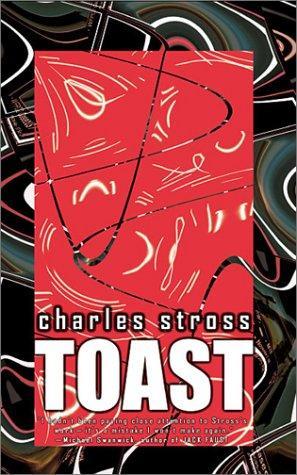
Toast
by
Stross, Charles
Published 1 Jan 2002
Someone came up with a beauty; a one-line change in the 1971 anti-trust ruling against AT&T that leaves them the right to sell software. UNIX dead by 1978, strangled by expensive licenses and no source code for universities; C and C++ non-starters: the future as VMS. Another change left me shaking my head: five miles per hour on a cross-wind. Gary Kildall didn’t go flying that crucial day, was at the office when IBM came calling in 1982 and sold them CP/M for their PC’s. By Y2K Microsoft had a reputation for technical excellence, selling their commercial UNIX-95 system as a high-end server system. (In this one, Bill Gates still lives in the USA.)

The Drunkard's Walk: How Randomness Rules Our Lives
by
Leonard Mlodinow
Published 12 May 2008
In August 1980, when a group of IBM employees working on a secret project to build a personal computer flew to Seattle to meet with the young computer entrepreneur, Bill Gates was running a small company and IBM needed a program, called an operating system, for its planned “home computer.” Recollections of the ensuing events vary, but the gist goes like this:12 Gates said he couldn’t provide the operating system and referred the IBM people to a famed programmer named Gary Kildall at Digital Research Inc. The talks between IBM and Kildall did not go well. For one thing, when IBM showed up at DRI’s offices, Kildall’s then wife, the company’s business manager, refused to sign IBM’s nondisclosure agreement. The IBM emissaries called again, and that time Kildall did meet with them.
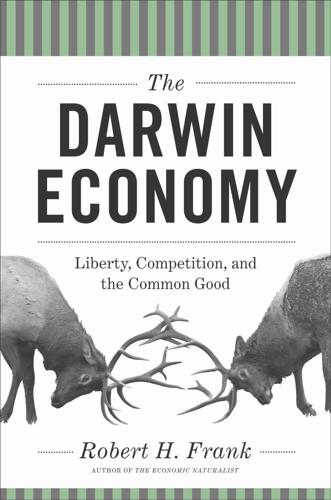
The Darwin Economy: Liberty, Competition, and the Common Good
by
Robert H. Frank
Published 3 Sep 2011
The sequence of events that made that future possible began when IBM approached Microsoft to inquire about developing an operating system for the personal computer it was planning to introduce. As Leonard Mlodinow recounts the story in a 1990 book, Gates initially told IBM that Microsoft couldn’t take on the project.6 He suggested that IBM instead contact Gary Kildall, whose firm, Digital Research, had already developed a personal computer operating system called CP/M. But Kildall’s wife, who managed Digital Research, was reluctant to sign the nondisclosure agreement that IBM required, so those talks broke off. Jack Sams of IBM then went back to Gates to discuss other possibilities.

Alpha Girls: The Women Upstarts Who Took on Silicon Valley's Male Culture and Made the Deals of a Lifetime
by
Julian Guthrie
Published 15 Nov 2019
Gates said he had a local guy, Tim Patterson, working on the programming. It would allow users to open, navigate, and manipulate files on their computer. The discussion continued for another hour, and the two agreed to meet again within two weeks. Morby didn’t get the Microsoft deal, but after her meeting with Gates, she met with computer scientist Gary Kildall, who had written the very first operating system, CP/M (for Control Program/Monitor), to connect computers. Kildall wrote the software from scratch, beating Microsoft to the market. His company was Digital Research, Inc. Sonja continued, “Jacqui and Kildall actually sat in a restaurant called the Buckhorn Barbecue near the Nut Tree complex, and Kildall grabbed a bunch of napkins and began to draw a diagram.”
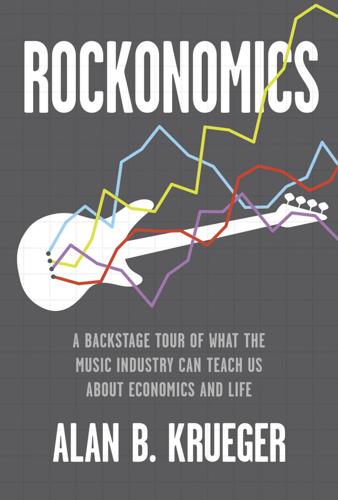
Rockonomics: A Backstage Tour of What the Music Industry Can Teach Us About Economics and Life
by
Alan B. Krueger
Published 3 Jun 2019
Small, often imperceptible differences in quality separate the best from the rest. As a result, luck matters for success more than ever. Releasing the right record at the right moment matters critically for success or failure. The same is true in the economy writ large. Bill Gates might have been Bill What’s-his-name if Gary Kildall and Digital Research had agreed to the terms IBM first offered them for developing the operating system for the new personal computer in 1980, before turning to Bill Gates’s fledgling company.17 Success is hard to judge ahead of time, and in no way guaranteed, even for the best performers.

The Inmates Are Running the Asylum
by
Alan Cooper
Published 24 Feb 2004
Flying airplanes is the archetypal programmer's avocation.[2] The cockpit control panel of an airplane is packed with gauges, knobs, and levers, but programmers thrive on these daunting complexities. Homo logicus finds it fun and engaging, despite (because of!) the months of rigorous study required. Homo sapiens would rather ride along as passengers. [2] All right, I confess: I'm a private pilot. Quintessential programmer-nerd Gary Kildall took me flying for the first time in his Piper Archer in 1979, and in that short flight I became hooked. The computer programmer in me loves all of that pointless complexity. For Homo logicus, control is the goal and complexity is the price they will pay for it. For normal humans, simplicity is the goal, and relinquishing control is the price they will pay.
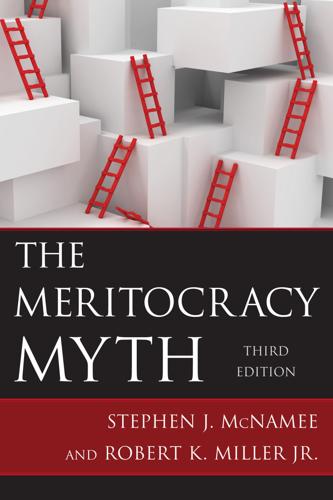
The Meritocracy Myth
by
Stephen J. McNamee
Published 17 Jul 2013
Although Microsoft was doing very well with its licensing contracts with these companies, the big prize was IBM, because IBM was coming out with a new line of personal computers and needed an operating system to run on a 16-bit Intel chip. Such an operating system called CP/M had been initially developed by Gary Kildall, a computer engineer, and it was then the fledgling industry standard. The rest of the story is legend. Tim Paterson at Seattle Computer Products had developed an adapted version of Kildall’s CP/M system, which came to be known as Quick and Dirty Operating System, or QDOS. Paterson leased his system to Microsoft.
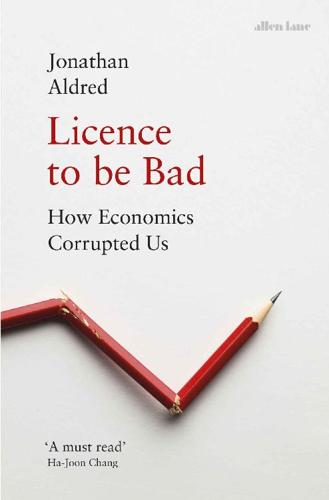
Licence to be Bad
by
Jonathan Aldred
Published 5 Jun 2019
By the late 1970s the leading operating system in the nascent field of desktop computers was called CP/M (Control Program for Microcomputers). Microsoft’s main business involved selling software to run on CP/M. Around this time IBM, whose giant presence in the industry was matched by the giant size of its mainframe computers, wanted to launch a desktop and needed an operating system. Not only was CP/M the market leader, its creator Gary Kildall was ahead of his rivals, having already developed multitasking. (If this sounds like another era, it was. Kildall’s company was originally called Intergalactic Digital Research.) However, for reasons which remain obscure, IBM approached Gates rather than Kildall to buy the licence for CP/M. Gates told them it wasn’t his and referred them to Kildall.

Code: The Hidden Language of Computer Hardware and Software
by
Charles Petzold
Published 28 Sep 1999
But instead of trudging through that long evolutionary process, let's take a look instead at a real operating system and get a feel for what it does and how it works. Historically, the most important operating system for 8-bit microprocessors was CP/M (Control Program for Micros), written in the mid-1970s for the Intel 8080 microprocessor by Gary Kildall (born 1942), who later founded Digital Research Incorporated (DRI). CP/M is stored on a disk. In the early days of CP/M, the most common medium for CP/M was a single-sided 8-inch diskette with 77 tracks, 26 sectors per track, and 128 bytes per sector. (That's a total of 256,256 bytes.) The first two tracks of the disk contain CP/M itself.

Chaos Monkeys: Obscene Fortune and Random Failure in Silicon Valley
by
Antonio Garcia Martinez
Published 27 Jun 2016
This allowed William Henry Gates III (her son) to score a meeting with IBM about providing a code compiler for IBM’s new, epoch-making product, the IBM PC. What IBM really wanted, though, was an operating system, the core code that manages memory and runs programs. Gates, whose nascent company, Microsoft, didn’t have anything like an entire operating system, honestly referred IBM to a company run by Gary Kildall, a pioneer in operating systems when the real money in computers was still in the hardware. In a story couched in legend, Kildall was off flying his personal plane when IBM representatives physically came knocking at his company’s office. His wife (the company’s business manager) refused to sign IBM’s aggressive nondisclosure agreement and sent them packing, and so IBM grudgingly went back to Gates asking about operating systems.
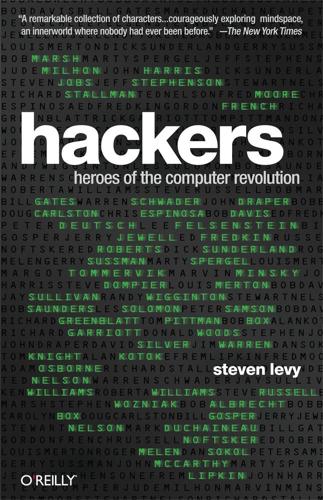
Hackers: Heroes of the Computer Revolution - 25th Anniversary Edition
by
Steven Levy
Published 18 May 2010
My conversations with them were the backbone of the book, and I would like to thank, in alphabetical order, Arthur Abraham, Roe Adams, Bob Albrecht, Dennis Allison, Larry Bain, Alan Baum, Mike Beeler, Dorothy Bender, Bill Bennett, Chuck Benton, Bob and Carolyn Box, Keith Britton, Lois Britton, Bill Budge, Chuck Bueche, David Bunnell, Doug Carlston, Gary Carlston, Marie Cavin, Mary Ann Cleary, Bob Clements, Tracy Coats, David Crane, Edward Currie, Rick Davidson, Bob Davis, Jack Dennis, Peter Deutsch, Steve Dompier, John Draper, Dan Drew, Mark Duchaineau, Les Earnest, Don Eastlake, Doug Englebart, Chris Espinosa, Lee Felsenstein, LeRoy Finkel, Howard Franklin, Bob Frankston, Ed Fredkin, Gordon French, Martin Garetz, Harry Garland, Richard Garriott, Lou Gary, Bill Gates, Bill Godbout, Vincent Golden, Dave Gordon, Ralph Gorin, Dan Gorlin, Bill Gosper, Richard Greenblatt, Margaret Hamilton, Eric Hammond, John Harris, Brian Harvey, Ted Hoff, Kevin Hunt, Chris Iden, Jerry Jewell, Robert Kahn, David Kidwell, Gary Kildall, Tom Knight, Joanne Koltnow, Alan Kotok, Marc LeBrun, Bob Leff, Mike Levitt, Efrem Lipkin, David Lubar, Olaf Lubeck, John McCarthy, John McKenzie, Robert Maas, Patricia Mariott, Bob Marsh, Roger Melen, Jude Milhon, Marvin Minsky, Fred Moore, Stewart Nelson, Ted Nelson, Jim Nitchals, Russ Noftsker, Kenneth Nussbacher, Rob O’Neal, Peter Olyphant, Adam Osborne, Bill Pearson, Tom Pittman, Larry Press, Malcolm Rayfield, Robert Reiling, Randy Rissman, Ed Roberts, Steve Russell, Peter Samson, Bob Saunders, Warren Schwader, Gil Segal, Vic Sepulveda, David Silver, Dan Sokol, Les Solomon, Marty Spergel, Richard Stallman, Jeff Stephenson, Ivan Strand, Jay Sullivan, Dick Sunderland, Gerry Sussman, Tom Tatum, Dick Taylor, Robert Taylor, Dan Thompson, Al Tommervik, Margot Tommervik, Mark Turmell, Robert Wagner, Jim Warren, Howard Warshaw, Joseph Weizenbaum, Randy Wigginton, John Williams, Ken Williams, Roberta Williams, Terry Winograd, Donald Woods, Steve Wozniak, and Fred Wright.

The Innovators: How a Group of Inventors, Hackers, Geniuses and Geeks Created the Digital Revolution
by
Walter Isaacson
Published 6 Oct 2014
An operating system handles the basic instructions that other software uses, including such chores as deciding where data should be stored, how memory and processing resources should be allocated, and how applications software interacts with the computer’s hardware. Microsoft did not yet make an operating system. It was instead working with one called CP/M (for Control Program for Microcomputers) that was owned by Gary Kildall, a childhood friend of Gates who had recently moved to Monterey, California. So with Sams sitting in his office, Gates picked up the phone and called Kildall. “I’m sending some guys down,” he said, describing what the IBM executives were seeking. “Treat them right, they’re important guys.”93 Kildall didn’t.
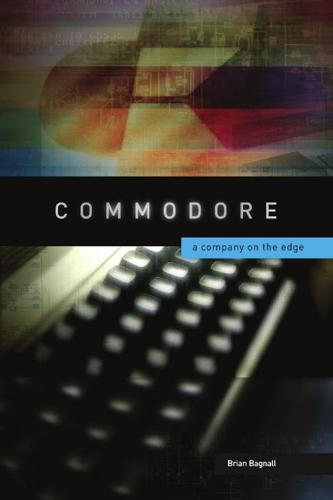
Commodore: A Company on the Edge
by
Brian Bagnall
Published 13 Sep 2005
In a broadcast of Computer Chronicles, Tramiel told his hosts, “As far as the Japanese are concerned, I was able to keep those people out of the US market and almost the world market for the past seven years. … What I’m trying to do is come out with the best product, the best quality, and the best price and by doing so, I keep those people out. Thanks to God, I’ve been successful so far.” Co-host Gary Kildall agreed, saying, “The C64 was definitely one of those devices that kept the Japanese machines out.” * * * At any other company, Kit Spencer would have been highly valued after his successful launch of the VIC-20 and C64. “Kit Spencer was key,” says Russell. “He was really an important person.”
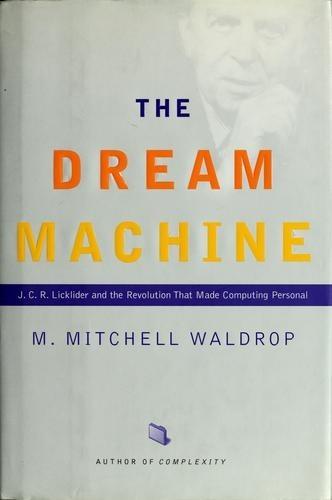
The Dream Machine: J.C.R. Licklider and the Revolution That Made Computing Personal
by
M. Mitchell Waldrop
Published 14 Apr 2001
On the software side, meanwhile, one of the seminal events had come in April 1976, when Dr. Dobbs Journal informed its readers that they could now equip their micros with a real, grown-up operating system for just seventy-five dollars. Known as CP/M-for Control Program for Microcomputers-it had been created by thirty-three-year-old Gary Kildall, a computer-science teacher at the Naval Postgraduate School in Monterey, California. It was quite similar to DECSYSTEM 10, DEC's original software for the PDP-10-indeed, Kildall had carried over many DECSYSTEM features without change, including the use of letters to specify particular disk drives, the use of file names containing a period and a three-letter extension, and the use of commands such as "DIR" to get the contents of a directory.